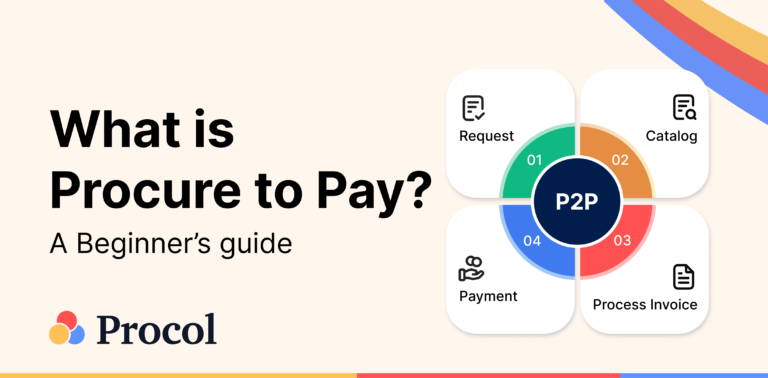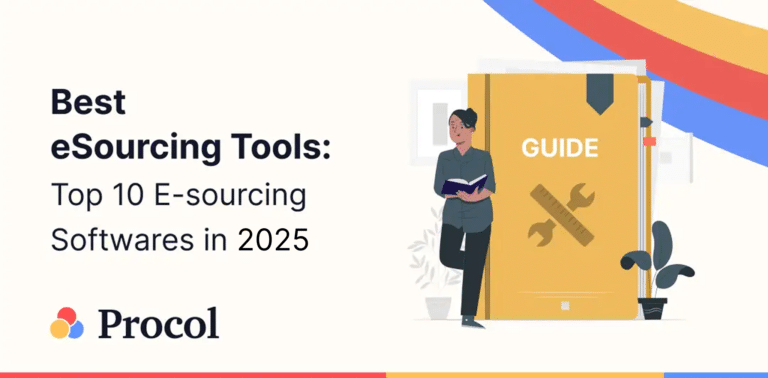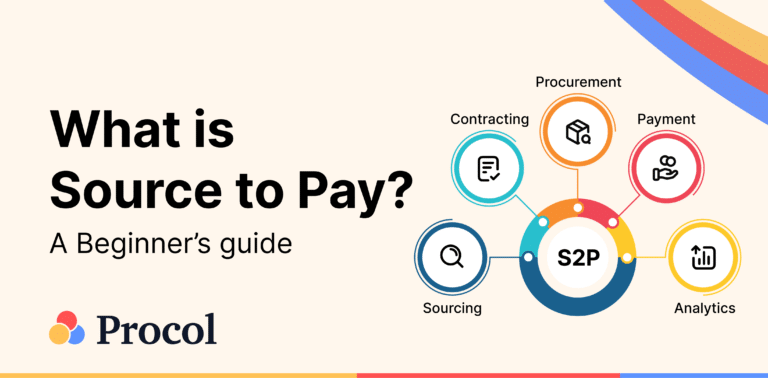Procol • April 15, 2025
Benefits of Procure-to-Pay Software

As the COVID-19 crisis intensifies, more and more organisations are looking to work from home in the long run, and if we look at the broader picture, COVID-19 may prove to be a major tipping point for workplace digitisation. The entire supply chain industry, and departments dealing in the procurement of raw materials have taken a significant hit as well. On March 30th, Gartner surveyed 317 CFOs and business finance leaders and found that 74% of those surveyed expect at least 5% of their workforce will become permanent work-from-home employees after the pandemic ends. TCS, on the other hand, mentioned that their goal is to shift 75% of their staff to work from home by 2025. The impact is likely to be both severe and protracted. There is a need for the industry to adapt to the changing times, adopting the best practices necessary for making the purchase process more streamlined and saving on costs.
A typical procure to pay process starts with planning the requirement, requesting for quotation, followed by selecting the vendor with the best prices, creating the purchase order and the goods receipt, assessing the orders received and performing quality checks followed by the payment invoice to complete the purchase process.
The basic Procure to Pay cycle consists of the following:
Purchase Requisition
Requests for the procurement of the requirement of commodities, products or services needed gets approved by the management and goes to the procurement team.
Purchase Orders
The procurement team selects the best suppliers from their database, goes through multiple emails and conducts numerous phone calls and creates purchase orders. Due to dispersed supplier information, it takes a lot of time for the procurement teams to close an order.
Receipt of Goods
After the order is complete, the supplier sends the invoice to all the respective departments, and the purchase team manually uploads it when the shipment arrives. The task is often cumbersome and time-consuming.
Invoicing
After the shipment is confirmed, the invoice receipt is sent to the seller. Organisations using non-P2P methods of invoicing still send the invoice via email or fax. The invoice is then matched against the PO.
Invoice Approval
After the invoice is checked, the receipt is in the ERP software. The process is stacked with multiple ERPs and checks of authorisation.
Payment
Lastly, when the ERP integration is done, the payment is made. Often, payments are made without internal approvals, or are duplicated. Not having a procurement software solution to track spends leads to unnecessary losses, paying ad-hoc is inefficient, takes longer and usually allows cash, which is not the best practice to follow as it ultimately creates a system with a lack of transparency.
There is a need for organisations to move from traditional legacy systems of work to new cloud-based processes that unify Procure to Pay (P2P) solutions. Digital Procure to Pay solutions bring all the purchase processes under a single, easy-to-use platform. According to the American Productivity and Quality Center (APQC)’s Open Standards Benchmarking, automation processes help companies create 1302.1 purchase orders, as opposed to 615.7 purchase orders per full-time employee (FTE), while the median cycle time to place a purchase order is reduced from 24 hours to 8 hours.

Automating the entire procurement cycle provides a plethora of benefits for the procurement teams. Here are some of the benefits you get from digital Procure to Pay solutions:
Reducing Costs and Direct Spends
Automated P2P Solutions provide the ability to breakout and analyse spend across different buying categories while ensuring that budgets and savings are tracked regularly. Purchasing can be controlled using automated approvals and thresholds for specified amounts. With a digital P2P system, companies can see early payment missed opportunities and bulk order discounts to point out the possibility of better negotiations and the opportunity for savings.
Improving workflow automation
It is estimated that even though 41% of companies are pairing their accounting or ERP systems with eProcurement tools, only 20% of businesses use a cloud-based eProcurement solution. Using an automated P2P system, invoices can be put straight through to the organisation’s ERP for payment. Automating such processes reduces both time and cost, enabling employees to focus on more strategic initiatives instead of working on repetitive tasks. Automated P2P systems allow purchase requisitions to get approved faster and sent to the suppliers seamlessly.
Gaining insights through spend analysis
Eliminate the requirement for paperwork and enforce manual checks within each stage of the procure-to-pay process; real-time strategic data allows purchase departments to gain better visibility, generate deeper insights into the supply base, and unlock saving opportunities. A Procure to Pay solution can also provide end-to-end visibility between POs, goods receipts, invoices, and other documents to ensure goods are as per specification before issuing payment.
Digitising Contract Management
Often, organisations dealing with a particular commodity prefer existing suppliers from which goods are generally sourced. However, it is difficult to access the past offerings of suppliers from thousands of stacks. Automated procure-to-pay offerings, like Procol, can help purchase managers generate a digital repository in order to store vendor contracts, allowing them to easily get track of their previous order history from any supplier at the time of purchase.
Enhancing vendor collaboration
Without any digital repository source, buyers would often have to contact each of their suppliers individually, with more and more companies looking to expand their vendor base, it is imperative for them to enhance vendor collaboration. Using an automated P2P solution would ensure that both buyers and suppliers can obtain real-time data in order to make accurate and informed decisions. Having end-to-end visibility regarding purchase orders, invoices, and other receipts will ensure that buyers and vendors are working synergically. Through the supplier portal, suppliers can have clear visibility about their payment status in order to plan for the future.
For procurement teams, the major reason for risk exposure is due to inefficiencies of the manual process and the bottlenecks associated with it. The benefits of Procure to Pay Software are derived from end-to-end integration of the entire procurement cycle. Spend Analysis, for example, requires complete visibility. A Procure-to-pay software can collate all the transactional data in a single, secure location for one-click analysis, requiring approval before the order is sent to the vendor. Automated onboarding of new vendors, along with measuring their effectiveness based on their price and negotiation history, can significantly streamline the supply chain while ensuring that a risk mitigation strategy is in place. Choosing the procurement system that fits your business requires an understanding of the specific company needs and the ways in which a cloud-based P2P solution like Procol can help you meet them.
Explore more from Procol
Discover expert tips, how-to guides, industry insights, and the latest procurement trends.

What is Procure-to-pay (P2P)? An Ultimate Guide
Procure to pay is the process from procurement of materials needed...

Best eSourcing Tools: Top 10 eSourcing Software in 2025
Discover top 10 e-sourcing tools and esourcing platforms necessary for efficient...

What is Source-to-pay in 2025? An Ultimate Guide
Source to pay is the process of sourcing vendors to procure...



















